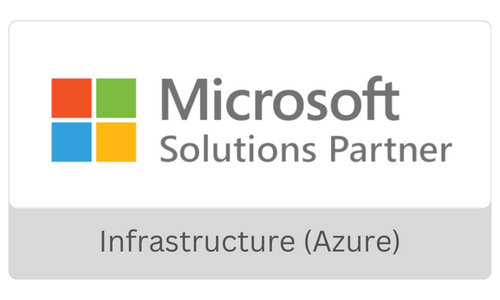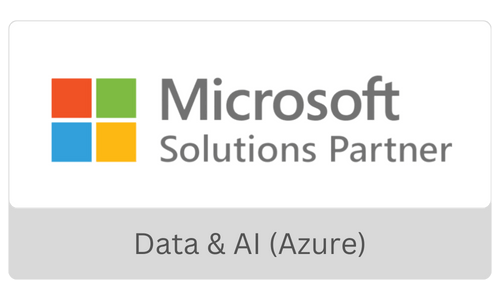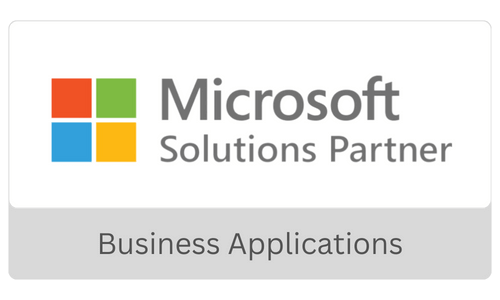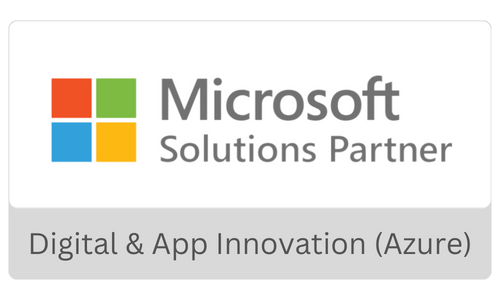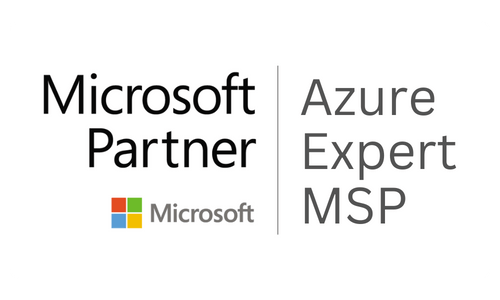DataForge: Gen AI Accelerator on Azure Databricks + Fabric Platform
Tap into the full potential of generative AI with turnkey solutions designed for your unique needs.
Unlock the power of data for AI and AI for data
Introducing the DataForge, a cutting-edge solution built on the Azure Databricks + Fabric platform. Designed to empower enterprises to unleash the full potential of AI innovation, the Gen AI Accelerator offers a suite of powerful features and benefits tailored to meet the unique needs of modern businesses.
With seamless integration with Azure Databricks, DataForge Accelerator provides a scalable and reliable data processing and model training infrastructure. Leveraging Fabric platform capabilities, it enables efficient management of AI workflows—from data ingestion to model deployment and beyond. But DataForge is more than just a platform; it catalyzes accelerated AI development. Simplifying complex tasks such as data pipeline orchestration, hyperparameter tuning, and model deployment allows organizations to focus on what truly matters: driving innovation and delivering value to their customers.
Moreover, DataForge promotes collaboration and efficiency across teams with built-in automation, documentation, and training resources. This ensures that everyone—from data scientists to developers to business stakeholders—is empowered to contribute to the AI journey. Whether you’re looking to optimize operations, enhance customer experiences, or unlock new revenue streams, DataForge is your trusted partner in realizing your AI ambitions. Join the ranks of leading enterprises leveraging AI to transform their businesses and unlock a world of possibilities with the DataForge.
DataForge: Our state-of-the-art accelerator for building gen AI solutions
Features
Provides a comprehensive solution for developing, deploying, and managing Gen AI applications on the Azure Databricks + Fabric platform.
Leverages Azure Databricks for scalable and reliable data processing and model training, ensuring high performance even with large datasets.
Seamlessly integrates with the Fabric platform for efficient management of AI workflows, from data ingestion to model deployment and monitoring.
Enables easy orchestration of data pipelines for ingesting, cleaning, and transforming data from diverse sources, ensuring data readiness for AI applications.
Supports the development of advanced machine learning and deep learning models using popular libraries like TensorFlow, PyTorch, and Scikit-learn.
Facilitates hyperparameter tuning to optimize model performance, leveraging built-in capabilities of Azure Databricks.
Enables seamless deployment of trained models as microservices on the Fabric platform, allowing for easy integration with enterprise systems and applications.
Provides version control for models deployed on Fabric, enabling easy tracking of changes and rollback to previous versions if needed.
Offers comprehensive monitoring and logging capabilities to track model performance, usage metrics, and system health, ensuring proactive maintenance and issue resolution.
Facilitates seamless integration with existing enterprise data systems, APIs, and applications, ensuring interoperability and data consistency.
Supports automated testing, deployment, and continuous integration/continuous deployment (CI/CD) pipelines, streamlining the development and deployment process.
Includes detailed documentation covering architecture, deployment steps, and usage instructions, along with training and support to ensure smooth adoption and operation.
Benefits
Speeds up the development of Gen AI applications by providing a ready-to-use platform with built-in tools and best practices.
Ensures scalability and high performance for AI workloads, allowing enterprises to process large volumes of data and train complex models efficiently.
Streamlines AI workflow management with Fabric integration, simplifying data processing, model development, and deployment.
Facilitates hyperparameter tuning and advanced model development techniques, leading to improved model accuracy and performance.
Helps enterprises bring Gen AI applications to market faster by automating key tasks and providing a streamlined development and deployment process.
Optimizes resource utilization and reduces infrastructure costs with cloud-based deployment on Azure Databricks.
Promotes collaboration among data scientists, developers, and business stakeholders, enabling cross-functional teams to work together effectively.
Ensures the reliability and stability of Gen AI applications with comprehensive monitoring, logging, and proactive maintenance capabilities.
Enables seamless integration with existing enterprise systems and applications, ensuring interoperability and data consistency across the organization.
Keeps pace with evolving AI technologies and requirements, providing a flexible and adaptable platform for future growth and innovation.
Build tailored gen AI solutions with DataForge with confidence.
Use Case: Sales Optimization
Scenario: A retail company wants to optimize its sales strategies to increase revenue and improve customer satisfaction. They aim to leverage AI-driven insights to predict customer churn, identify opportunities for cross-selling and upselling, optimize pricing strategies, and forecast demand accurately.
Solution with DataForge AI Suite:
- Utilize historical customer data to train a churn prediction model.
- Analyze customer behavior, purchase history, and engagement metrics to identify patterns indicative of potential churn.
- Deploy the churn prediction model as a microservice on the Fabric platform.
- Provide real-time alerts to sales teams for proactive retention efforts.
- Develop recommendation models using collaborative filtering or content-based filtering techniques.
- Analyze customer purchase history and preferences to suggest relevant products or services.
- Implement sales nudges to prompt sales representatives with personalized recommendations during customer interactions.
- Monitor the effectiveness of cross-sell/up-sell strategies and refine recommendations based on performance metrics.
- Utilize pricing optimization algorithms to determine optimal price points for products.
- Incorporate demand elasticity, competitor pricing, and seasonality into the pricing model.
- Continuously analyze sales data and market trends to adjust pricing dynamically for maximum profitability.
- Automate pricing decisions through integration with the company’s sales systems.
- Build demand forecasting models using time-series analysis or machine learning algorithms.
- Incorporate factors such as historical sales data, marketing campaigns, economic indicators, and external events.
- Generate accurate demand forecasts at various granularities (e.g., product category, region, time period).
Benefits
- Increased Revenue: Predictive analytics and personalized recommendations drive sales growth through targeted marketing and improved customer retention.
- Enhanced Customer Satisfaction: Personalized recommendations and optimized pricing strategies enhance the customer experience, leading to higher satisfaction and loyalty.
- Cost Savings: Efficient inventory management and pricing optimization reduce costs and improve profit margins.
- Data-Driven Decision Making: AI-driven insights empower sales teams to make informed decisions and adapt strategies based on real-time market dynamics.
Have a specific use case for your retail business?
We got you covered.
Use Case: Healthcare Network Optimization
Scenario: A healthcare network comprising hospitals, clinics, and specialty care facilities aims to optimize its operations to deliver better patient care, improve operational efficiency, and enhance revenue generation. Leveraging AI-driven insights, the healthcare network seeks to predict patient demand, optimize resource allocation, reduce wait times, and personalize patient treatment plans.
Solution with DataForge AI Suite
- Develop predictive models to forecast patient demand for healthcare services across different specialties and locations.
- Incorporate historical patient data, demographic trends, seasonality, and external factors (e.g., flu season, public health events) into the forecasting model.
- Generate accurate predictions of patient volumes for various time horizons (e.g., daily, weekly, monthly) to facilitate proactive resource planning and capacity management.
- Utilize optimization algorithms to efficiently allocate healthcare resources, such as staff, equipment, and facilities.
- Analyze patient demand forecasts, staffing schedules, and facility capacities to optimize resource allocation and scheduling.
- Balance workload across different departments and locations to minimize wait times, optimize patient flow, and improve operational efficiency.
- Implement real-time patient flow monitoring systems to track patient movement and wait times within healthcare facilities.
- Analyze patient flow data to identify bottlenecks, inefficiencies, and opportunities for process improvement.
- Optimize appointment scheduling, triage protocols, and patient routing to reduce wait times, improve throughput, and enhance patient satisfaction.
- Develop personalized treatment recommendation models based on patient medical history, diagnostic tests, and clinical guidelines.
- Incorporate patient-specific factors, such as demographics, genetics, and lifestyle, into treatment planning algorithms.
- Generate tailored treatment plans and care pathways to optimize patient outcomes, minimize adverse events, and improve patient adherence.
Benefits
- Enhanced Patient Care: AI-driven insights enable proactive patient demand management, resource allocation, and treatment planning, leading to better patient outcomes and satisfaction.
- Improved Operational Efficiency: Optimized resource allocation and patient flow management reduce wait times, enhance throughput, and streamline operations across healthcare facilities.
- Revenue Optimization: Efficient resource utilization and patient flow management lead to increased patient throughput, revenue generation, and profitability for the healthcare network.
- Personalized Healthcare: Tailored treatment plans and care pathways improve patient outcomes and satisfaction by addressing individual patient needs and preferences.
Have a specific use case for your retail business? We got you covered.
Use Case: Manufacturing Operations Optimization
Scenario: A manufacturing organization seeks to optimize its operations to improve productivity, reduce costs, and enhance product quality. Leveraging AI-driven insights, the company aims to forecast production demand, optimize production schedules, minimize downtime, and enhance predictive maintenance processes.
Solution with DataForge AI Suite
- Develop demand forecasting models to predict product demand across different markets, regions, and product lines.
- Utilize historical sales data, market trends, and economic indicators to forecast future demand accurately.
- Generate demand forecasts at various granularities (e.g., SKU level, product category, time horizon) to facilitate production planning and inventory management.
- Employ optimization algorithms to create efficient production schedules that balance production capacity, resource availability, and demand fluctuations.
- Consider factors such as machine availability, labor constraints, material availability, and order priorities in production scheduling.
- Optimize batch sizes, production sequences, and changeover times to minimize setup costs, reduce lead times, and improve production efficiency.
- Implement predictive maintenance models to forecast equipment failures and proactively schedule maintenance activities.
- Analyze sensor data, equipment telemetry, and historical maintenance records to identify patterns indicative of impending failures.
- Predict maintenance needs and schedule preventive maintenance tasks during planned downtime periods to minimize production disruptions and unplanned downtime.
- Develop quality prediction models to identify potential defects and quality issues during the manufacturing process.
- Analyze sensor data, production parameters, and quality control metrics to detect anomalies and deviations from expected quality standards.
- Implement real-time quality monitoring systems to identify and address quality issues early in the production process, reducing scrap, rework, and product defects.
Benefits
- Improved Productivity: AI-driven insights optimize production schedules, minimize downtime, and streamline operations, leading to increased throughput and productivity.
- Cost Reduction: Efficient resource allocation, predictive maintenance, and defect prevention strategies reduce costs associated with downtime, scrap, and rework.
- Enhanced Product Quality: Real-time quality monitoring and defect prevention measures improve product quality and consistency, enhancing customer satisfaction and brand reputation.
- Data-Driven Decision Making: AI-driven analytics provide actionable insights into production demand, resource utilization, and maintenance needs, empowering manufacturing teams to make informed decisions and optimize operations.
Coming from a different industry?
DataForge caters to the needs of businesses from any industry. Fill in the form to talk to our experts and discuss potential use cases for DataForge in your business.

